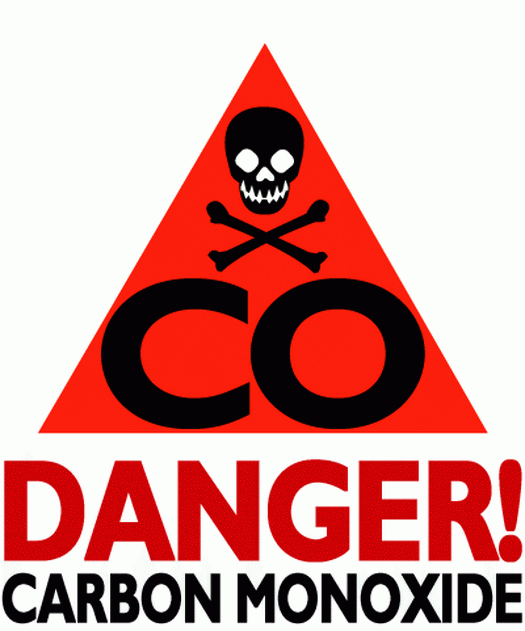Carbon Monoxide (CO) is a toxic but colorless, odorless, and tasteless gas. And because it is initially non-irritating, it is difficult for people to detect. Most people associate it with gasoline engine exhaust, and erroneously believe that unless they smell the engine exhaust they don’t have anything to worry about. It is the product of incomplete combustion of organic matter in an enclosed space (like an engine cylinder) with an insufficient supply of oxygen to enable complete oxidation to carbon dioxide (CO2). It’s not as big a problem with newer gasoline motors, but it certainly is with older engines, as well as with other gasoline-powered tools, generators, propane and other gas heaters, and cooking equipment.
Carbon monoxide exists naturally in the atmosphere at about 0.1 parts per million (ppm). Inside the average home it is between 1-5 ppm. Exposures at 100 ppm or greater can be dangerous to human health even at short exposures. Even 35 ppm over the course of several hours can result in headaches and dizziness. The amount of CO from car exhaust, if the car has a catalytic converter, is in the 100-200 ppm range. If the car doesn’t have a catalytic converter, it is in the 7000 ppm range. Parked next to an idling car with only 100-200 ppm exhaust will result in headaches and loss of judgment within 2-3 hours. Within 4-5 hours you will become insensible and maybe even have convulsions. If you are sleep while being exposed like this, you won’t be aware of any of it, because you will be suffering from hypoxia, which is a lack of oxygen to the brain. At 7000 ppm, you’ll be dizzy within 2 minutes, unconscious in 4, and dead in 20.
If you drive a gasoline powered vehicle, you should have a carbon monoxide detector in the vehicle, even if you never idle while parked. If you have a propane heater or a generator you should have a carbon monoxide detector. If someone parks next to you in a truck stop parking lot and idles their engine, you should have a carbon monoxide detector in your vehicle.
Diesel engines produce virtually no carbon monoxide, less than one percent of that of a gasoline engine, so drivers of big trucks don’t need to worry about it as much, as they spend most of their time parked around other big trucks who are all burning diesel. Still, I once had my detector go off in the parking lot of a chicken processing plant, the lot where the employees park their cars, where I was going to park and sleep for a few hours while I waited for receiving to open. Without a carbon monoxide detector, I might have been sleeping a really long time.
If you use a propane heater, you should consider getting a dual detector, one that detects both carbon monoxide and explosive gasses (propane, natural gas, etc). Most of the dual detectors are designed to be hard wired to a 12-volt source. The Safe-T-Alert 70-742 is a really good one at about $100 online, or around $180 at RV stores.
The sensors in these detectors have a finite life, so you should replace them every 5 years or so. On some of them the manufacturer will tell you how long they will last. Some of them even have an end-of-life alarm built into the detector which lets you know when the sensor no longer works. The natural gas/LP detectors have a shorter life than the single CO detectors do.
My first van was a gasser, so I got a CO detector right away. When I moved into the diesel Sprinter I kept the detector, and I’m glad I did. It goes off 2-4 times a year just from people idling while parked next to me in the winter. And it goes off once every year or two in the summer for one reason or another – cars idling, chicken processing plants, delivering to a chemical plant, etc. You probably won’t wake up dead if exposed to carbon monoxide out here on the road, but even small amounts, especially when routinely or frequently exposed, will result in long term memory loss, judgment issues, fatigue and even flu-like symptoms. A detector is cheap insurance against the problems of even small exposures, and is critical to alert you of high exposures.
